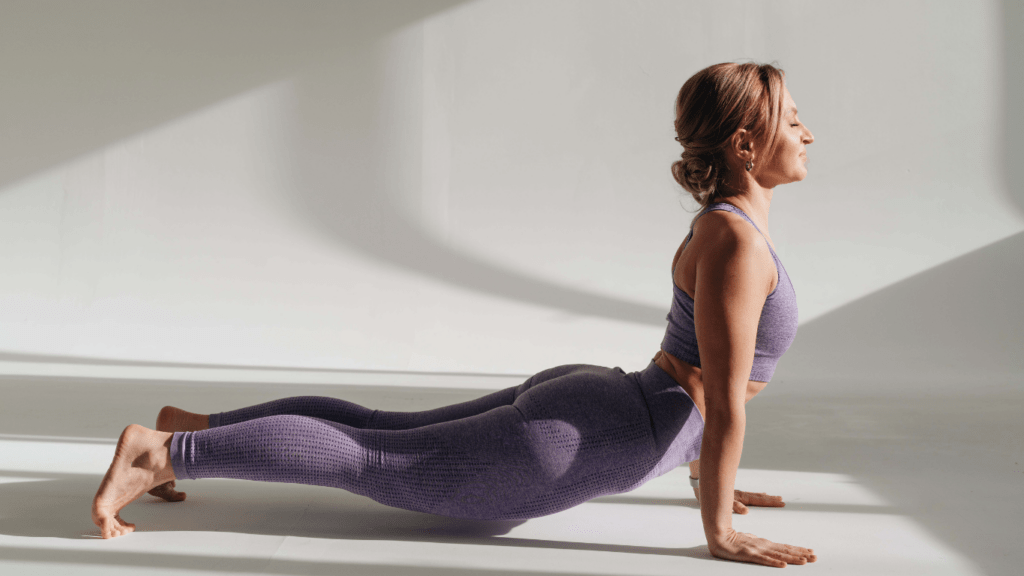Understanding Back Pain
Back pain affects millions of people globally. The pain can stem from various sources like:
- muscle strain
- poor posture
- underlying medical conditions
Understanding the root cause is crucial for effective treatment.
Common causes include muscle or ligament strain, disk problems, arthritis, and skeletal irregularities. Strain often results from heavy lifting or abrupt awkward movements. A bulging or ruptured disk can press on a nerve, causing intense pain.
Many people experience back pain due to poor posture. Sitting for long periods, especially with inadequate back support, leads to spinal misalignment and muscle tension. Strengthening muscles through targeted exercises, like yoga, can alleviate this.
Medical conditions, such as arthritis, can also contribute. Osteoarthritis, which affects the lower back, causes significant discomfort. In some cases, spinal stenosis, a narrowing of the space around the spinal cord, may lead to nerve pain.
Back pain can range from a dull ache to a sharp, disabling pain. Acute pain typically lasts a few days to a few weeks, while chronic pain persists for more than three months. Knowing whether your pain is acute or chronic helps determine the best approach to treatment.
Understanding these fundamental aspects connects directly to why yoga can be beneficial. By focusing on specific poses and stretches, it’s possible to target and relieve the areas commonly affected, promoting overall back health.
Benefits Of Yoga For Back Pain
Yoga offers numerous advantages for those experiencing back pain. Engaging in specific poses and stretches improves flexibility and strength. This often leads to reduced discomfort and better posture. Improved posture, in turn, minimizes the strain on back muscles and supports spinal health.
Deep breathing and relaxation techniques incorporated in yoga help diminish stress. Lower stress levels can lessen muscle tension, contributing to pain relief. The focus on mindful movements ensures that individuals practice slow, deliberate exercises, reducing the risk of aggravating back pain.
Regular yoga practice enhances body awareness. Increased awareness allows people to identify and correct poor postural habits that contribute to back pain. Moreover, yoga’s emphasis on core strength directly supports the back. A strong core reduces the likelihood of muscle imbalances, which are a common cause of pain.
Many poses target specific areas of the back. For example, Cat-Cow stretches improve spinal flexibility, while Child’s Pose gently stretches the lower back. Combining these poses with consistent practice results in long-term pain management and spinal health improvement.
Scientific studies support yoga’s efficacy in alleviating back pain. Research published in the Annals of Internal Medicine found that yoga participants experienced significant reductions in chronic lower back pain compared to those receiving standard care. Such findings highlight yoga’s beneficial impact on back pain management.
Overall, including yoga in one’s routine provides a holistic approach to managing back pain. Through consistent practice, individuals achieve better posture, increased flexibility, and a stronger core, all contributing to reduced back pain and enhanced well-being.
Effective Yoga Stretches

Yoga offers stretches that target key areas of back pain. These stretches improve flexibility, relieve tension, and strengthen the back muscles.
Cat-Cow Stretch
The Cat-Cow stretch, done on hands and knees, improves spinal flexibility and relieves back tension. Start by aligning your wrists under shoulders and knees under hips. Inhale while dropping the belly, lifting the head and tailbone (Cow). Exhale while arching the spine, tucking the chin and tailbone (Cat). Repeat this flow 10 times for maximum benefit.
Child’s Pose
Child’s Pose, a resting pose, gently stretches the spine, hips, and shoulders. Begin on hands and knees, bringing your big toes together and knees apart. Sit back onto your heels, extending your arms forward and forehead to the mat. Hold the pose for 1-2 minutes, focusing on deep breaths to release tension.
Downward Dog
Downward Dog stretches the entire back, shoulders, and hamstrings. Start on hands and knees, tuck your toes, and lift your hips towards the ceiling, forming an inverted V-shape.
Keep your hands shoulder-width apart and feet hip-width apart. Engage your core and press your heels towards the floor. Hold the pose for 5-10 breaths, then release gently.
These stretches, when practiced consistently, can greatly alleviate back pain and bolster overall spine health.
Yoga Poses To Relieve Back Pain
Here are some essential yoga poses that specifically target and alleviate back pain. Practicing these poses regularly enhances flexibility and supports spinal health.
Bridge Pose
Bridge Pose stretches the chest, neck, and spine while strengthening the back muscles. Begin by lying on your back with knees bent and feet flat on the floor, hip-width apart. Press your feet into the ground, lift your hips toward the ceiling, and keep your shoulders and head on the floor. Hold for 30 seconds, then lower hips back down.
Sphinx Pose
Sphinx Pose targets the lower back and promotes relaxation. Lie on your stomach with legs extended behind you, elbows under your shoulders, and forearms on the floor. Lift your chest off the floor, keeping your neck in a neutral position. Hold this pose for 1-3 minutes, focusing on breathing deeply and relaxing the lower back.
Supine Twist
Supine Twist, also known as Reclining Twist, helps release tension in the spine. Lie on your back and bring your knees to your chest. Extend your arms out to the sides, then gently lower your knees to one side while keeping your shoulders on the ground. Hold the position for 30 seconds, then switch sides. Repeat as needed.
Tips For Practicing Yoga Safely
- Ensuring correct form is essential for safe practice.
- Incorrect alignment can lead to injuries.
- Engage the core, keep the spine neutral, and follow instructor cues.
- Modifying poses helps adapt to individual comfort levels.
- Use props like blocks and straps to support stretches.
- Avoid forcing the body into any position.
- Warm-up routines reduce strain on muscles.
- Light stretches, such as arm circles and gentle twists, prepare the body for yoga.
- Always start with these activities before deeper poses.
- Listening to your body prevents overexertion.
- If any pose causes pain, stop and reassess.
- Yoga should be challenging but never painful.
- Progressing gradually minimizes the risk of injury.
- Increase intensity and difficulty over time.
- Start with basic poses before attempting advanced ones.
 Vickie Stacy has been a dynamic force behind the growth of Top Wellness Activity Hub, bringing her expertise in digital marketing and social engagement to the forefront of the platform's outreach efforts. With a deep understanding of audience behavior and an eye for creative communication, Vickie has crafted effective strategies that have significantly increased the platform's visibility and user engagement. Her work focuses on building a strong online community, where wellness enthusiasts can find inspiration, share their experiences, and support one another. Through her innovative use of social media campaigns, email marketing, and interactive content, Vickie ensures that the platform reaches a diverse audience, connecting with users on a deeper level.
Vickie Stacy has been a dynamic force behind the growth of Top Wellness Activity Hub, bringing her expertise in digital marketing and social engagement to the forefront of the platform's outreach efforts. With a deep understanding of audience behavior and an eye for creative communication, Vickie has crafted effective strategies that have significantly increased the platform's visibility and user engagement. Her work focuses on building a strong online community, where wellness enthusiasts can find inspiration, share their experiences, and support one another. Through her innovative use of social media campaigns, email marketing, and interactive content, Vickie ensures that the platform reaches a diverse audience, connecting with users on a deeper level.